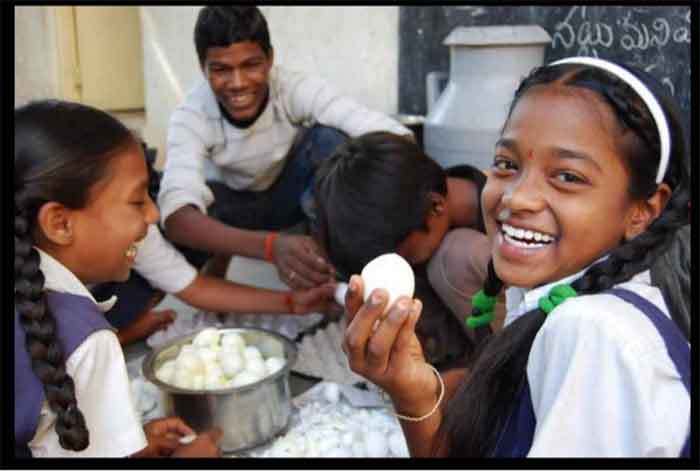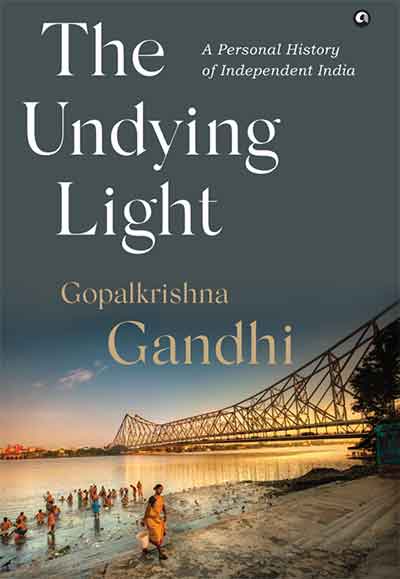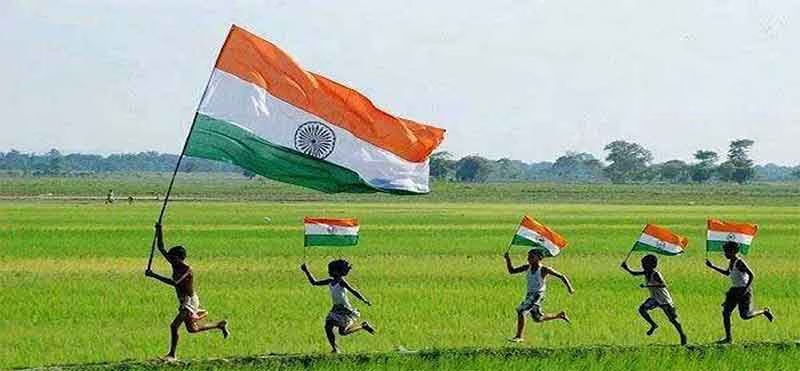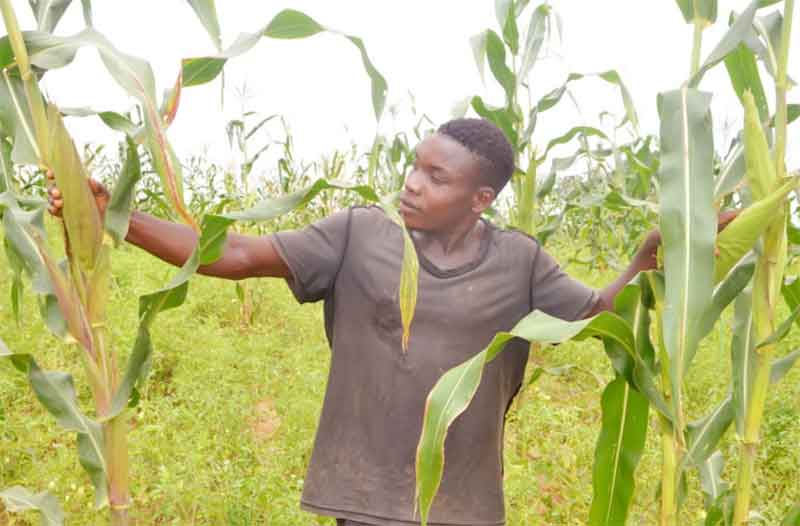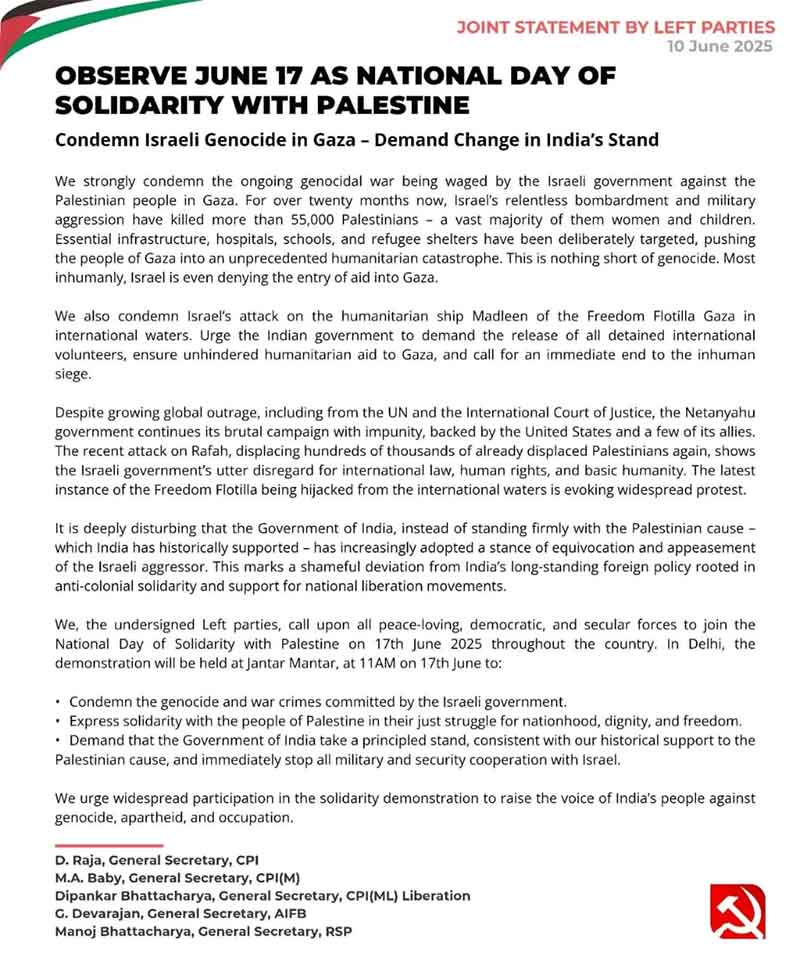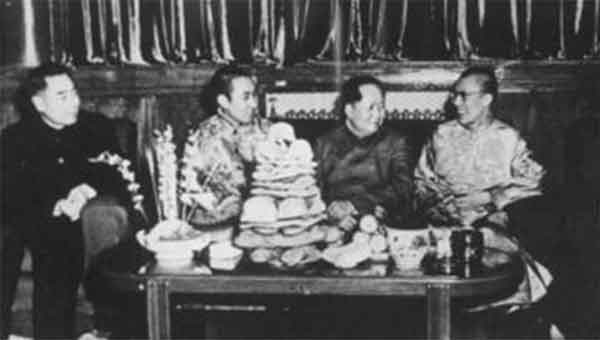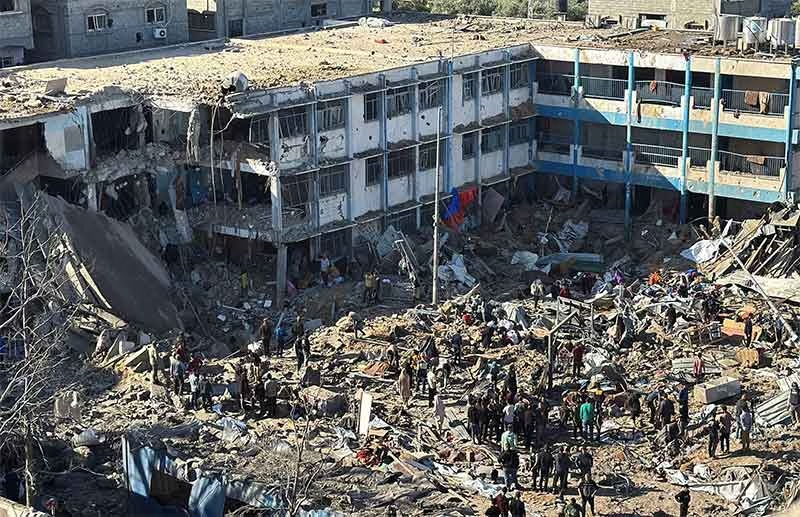
A few days ago, as Navratri overlapped with Eid, I found myself staying with a Bengali friend’s family in a pocket of Uttar Pradesh on the edge of New Delhi.
There was much grumbling all around as they deeply resented the fact that throughout the nine days of the Hindu festival the Yogi Adityanath government had prohibited sale of any meat or ‘non-veg’ products in the entire state. Forget mutton, fish or chicken, not even eggs were available anywhere. (What a miserable Eid it must have been this year for those Muslims living in this miserable state).
And that day, hearing the sound of a marching drumbeat, as I looked out from their balcony onto the street below I saw two neat rows of about 100 RSS cadres in a procession with a police escort. They were all generally fairer skinned than most people watching them go by and their spotless white shirts and well-pressed khaki trousers confirmed their status as the local middle-class – needless to say, local upper caste too.
Now, what on Earth you may ask, does the content of the first paragraph of this article have to do with that in the second one?
Well, I noticed that none of these RSS folk were underfed in any way (no Kwashiorkor and marasmus here for sure). However, they were not particularly healthy either, with the protruding middle of many of them forcibly dragging the rest of their reluctant bodies, in a ‘let-us-do-our-duty-to-the-motherland’ kind of way.
That’s when it occurred to me that instead of the ‘liberal democracy’ India constantly proclaims itself to be, what we live in is a ‘lentil democracy’ – the rule of the dal-eaters, by the dal-eaters, for the dal-eaters. Yes, they have paneer too, the almighty paneer, but only those who personally own a dairy can eat that every day. Lentils, in all its variety, are indeed the key protein holding up the ironed trousers of our great vegetarian dominated nation.
The question that arose in my head at that moment was very simple. How did a minority bunch of lentil-eaters manage to concentrate such power, resources, and status in such a vast and populated country? A country, where the majority would happily spurn the yellow bean and eat much richer sources of protein – sourced from every part of the Earth, water or sky – as long as it was well-cooked and accessible?
‘Accessible’ here is the critical term – because that’s what the daily lentils and occasional paneer-eaters have ensured over the centuries – blocked access to all other forms of protein to the masses of India. The ordinary Indian who wishes to eat animal protein of any kind faces a daunting barrage of policies that make it unaffordable, unavailable and as the relentless propaganda claims – undesirable too.
Meat consumers are made to feel like criminals, meat sellers are attacked and often lynched, meat consumption is banned in many places on Hindu festival days or round-the-year in ‘holy towns’, abattoirs are demolished or not allowed to be built at all. There is only one term for this cruel hegemony of lentil-eaters in a land full of meat eaters – Food Fascism.
And the consequence of this ‘Nazism with Indian characteristics’ is that we have the world’s largest population of stunted, underweight and malnourished men, women and children. It is also the main reason why India has the highest burden of disease in the world.
India accounts for about 28% of the global cases of tuberculosis, a disease directly linked to malnutrition, and due to which there were an estimated 3.23 lakh deaths in 2023 alone. An estimated 5.77 million Indian children under five years old are affected by severe wasting. With a case fatality rate of 3.4% to 35% this potentially means anywhere between 340,000 to 3.5 million children dying every year.
Protein is an essential macronutrient crucial for various bodily functions, including tissue repair, enzyme production, and immune system support. A deficiency in protein can have severe consequences across all age groups, but its impact is particularly devastating during critical stages of development.
In children, protein deficiency leads to stunted growth, impaired cognitive development, and weakened immunity. This not only hinders their physical development but also limits their educational attainment and future productivity (‘Merit’ is not possible on a protein empty stomach).
Women, especially during pregnancy and lactation, have increased protein requirements. Inadequate protein intake during these critical periods can lead to anaemia, maternal morbidity, and low birth weight in infants. The National Family Health Survey (NFHS-5) indicates that a significant proportion of women, particularly those from disadvantaged backgrounds, suffer from anaemia and other nutritional deficiencies. This perpetuates a cycle of intergenerational malnutrition, where malnourished mothers give birth to malnourished children.
Beyond physical health, protein deficiency also has profound effects on cognitive function and productivity. It leads to fatigue, muscle weakness, and reduced concentration, making it difficult for individuals to perform physical labour and engage in cognitively demanding tasks. This has significant economic implications, as it reduces the productivity of the workforce and perpetuates poverty.
Are any of these accidental or just due to the inefficiency of the Indian state machinery or corrupt politicians alone? The stark truth is that in India, the issue of protein deficiency is deeply intertwined with the country’s millennia old caste and class structures.
The denial of access to affordable protein, particularly meat, always was and continues to be a tool to maintain the existing social order. Children from Scheduled Castes (SC) and Scheduled Tribes (ST), historically marginalized communities, are disproportionately affected by malnutrition, with stunting rates significantly higher than those of children from upper castes.
The Comprehensive National Nutrition Survey (CNNS) 2016-18 for example revealed that 38% of Adivasi children under five are stunted, compared to 34% nationally, highlighting the disproportionate impact on some communities compared to others. Adivasi communities, who traditionally relied on hunting and fishing for protein, have also been systematically deprived of these resources due to deforestation, displacement, and wildlife protection laws. This has forced them to rely on carbohydrate-heavy diets, leading to severe malnutrition.
Dalits, historically relegated to the lowest rungs of the caste system, also face systematic barriers to accessing protein. The beef ban in many Indian states, ostensibly enacted to protect cows, has deprived Dalit communities of a cheap and readily available source of protein. Today, this has become true of poor Muslims also in many parts of India.
And it is happening at the policy level and not just due to a few fanatics pushing their culinary preferences over the rest of the country. The culinary preferences of the Hindu upper castes, who have historically held power and control over resources, have been translated into policies that favour vegetarian food systems, neglecting the nutritional needs of all other Indians.
Since Independence the Indian government has provided on a regular basis billions of rupees worth of subsidies to farmers producing cereals and pulses, but the meat industry receives little to no support. The food choice of a majority of Indians does not get any subsidy or state support at all and is actively discriminated against!
This policy bias not only makes meat less affordable but also reinforces the social hierarchy by limiting access to a vital source of protein for the poor. India’s vegetarian dictatorship is in fact resulting in nothing short of a genocide – with all those who don’t belong to the exclusive club of the twice-born – targeted for slow cleansing through starvation.
Subscribe to Our Newsletter
Get the latest CounterCurrents updates delivered straight to your inbox.
One of the questions I keep getting asked while overseas is – how is it that India, with its desperate levels of poverty, has not had a revolution as yet?
My simple answer is that while India’s communists are as brilliant in theory as any of their counterparts in Russia, China or Vietnam and the proletariat too is ready to revolt – the missing ingredient was good quality protein. Funny as it may sound I truly believe that a lentil-eating Marx, Lenin or Mao would have been relegated to the organic waste bins of history!
Breaking the shackles of “food fascism” and ensuring dietary justice is essential for bringing about radical change in the long-standing unjust equations of social, economic and political power in India.
As the new Countercurrents.org campaign puts it, we have no choice but to ‘eat our way to the Revolution!’
Satya Sagar is a journalist and public health worker who can be reached at [email protected].


